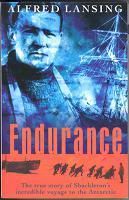A blog about the Edwardian era in the UK - objects, buildings, people, literature, film and all other aspects of the Edwardian era (covering 1901-1919)

Wednesday, 7 September 2011
Endurance: Shackleton's incredible voyage to the Antarctic
In 1914, the main part of the Imperial Trans-Antarctic Expedition set sail from the UK in the ship Endurance, bound for Antarctica. Bound for Vahsel Bay in the Weddell Sea, the plan was for Sir Ernest Shackleton, who already had Antarctic experience from previous expeditions, and a party of men would make their way across Antarctica via the South Pole, resulting in a journey across the entire Antarctic continent which had never been done before (when the Expedition left, and up until 1956, only 9 men had ever reached the South Pole, all members of Scott or Amundsens Teams as part of the Race to the Pole in 1911/12). The Ross Sea Party would lay store depots on the other side of the Pole from the Australasian 'side' of Antarctic using the ship Aurora. After leaving the Whaling Station at South Georgia on 5th December 1914, the Endurance, its crew, and the Weddell Sea Party of the Imperial Trans-Antarctic Expedition dissapeared. They were expected to be heard of again by November 1915, it wasn't until May 21 1916 that Shackleton and two other members of the Expedition reached the Whaling Station at South Georgia by mountain after an epic journey, starting with the Endurance becoming trapped in ice and resulting in the crew and party setting camp on moving ice floes and using the three ships boats to travel first to Elephant Island where a camp was set up, and then one boat, the James Caird, crewed by Shackleton and others sailing to South Georgia where a smaller party made the arduous mountain crossing to the Whaling Station, from where relief was sent as soon as possible to rescue all the men. Not a single man died from the crew of the Endurance or the Weddell Sea Party. The Ross Sea Party were not so fortunate with three out of ten of the party dying.
This superb book by Alfred Lansing tells the story of the Endurance crew and the Weddell Sea Party and is, despite a number of books regarding the Expedition and its fate, considered the best. The gripping and harrowing story is told very well and the book is highly reccomended for one of the most heroic stories from the heroic age of Antarctic exploration, which is considered to have taken place between 1897 and 1922, including the Edwardian era expeditions by Scott and Shackleton
Subscribe to:
Post Comments (Atom)

No comments:
Post a Comment